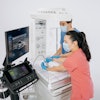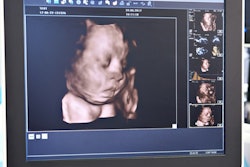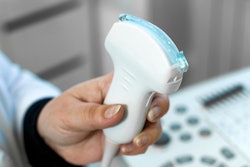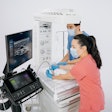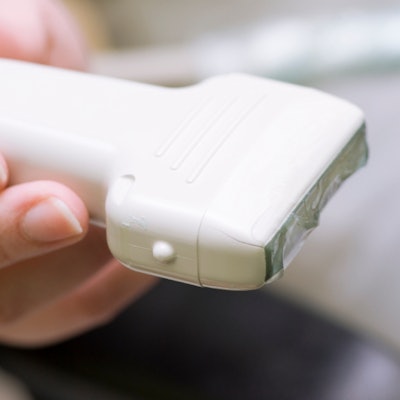
Point-of-care ultrasound (POCUS) showed success in two rescue operations from caving accidents, according to a Swiss report published September 21 in Wilderness & Environmental Medicine.
Researchers led by Alexandre Moser, MD, from Bern University Hospital described the operations, in which POCUS helped in clinical assessment and guidance of locoregional anesthesia for patient evacuation and transport from the accidents.
“Our cases demonstrated that the administration of ultrasound-guided prehospital locoregional anesthesia is a safe, rapid, and effective procedure even in extreme situations such as cave rescues,” Moser and colleagues wrote.
While caving accidents are rare, they present unique challenges when it comes to emergency patient care. This includes medical personnel navigating themselves and equipment through narrow corridors. To retrieve patients and transport them to the surface, alternative methods such as locoregional nerve blocks may be needed for patient comfort and safety.
POCUS, meanwhile, has shown promise in previous studies for guiding local anesthesia administration. Moser and colleagues wanted to describe two cave rescue cases where POCUS was used to clinically assess patients on the spot.
In the first case, a medical team rescued a 45-year-old cave explorer in January 2022 who fell from 26 feet. The incident occurred about 1,738 feet away from the surface and 230 feet below it. The 63-person rescue operation took place over two days.
After primary surveying and a body check, the team used a POCUS device (Butterfly iQ+, Butterfly) for an extended focused assessment, which revealed normal findings.
After the explorer's left foot and right arm were immobilized, the team inserted an intravenous (IV) line to start analgesia. But after repeated doses of IV fentanyl and ketamine were not successful in lessening the pain, two POCUS-guided nerve blocks were administered. The procedures were performed within 30 minutes, the researchers wrote.
From there, the patient was safely transported to the surface and to a level-one trauma center. Radiologic exams confirmed fractures in the wrist, clavicle, and the upper and lower ankle. She also sustained a slightly displaced fracture of the right upper and lower pubic bone and a superficial fracture of the right temporal bone.
The patient recovered partially and was discharged to a rehabilitation center after 11 days.
For the second case, medics rescued a 39-year-old speleologist who was hit on the pelvis by a boulder. The incident took place at 6,561 feet in altitude, 328 feet from the cave entrance, and 164 feet below the surface.
After the medical team realized that standard IV pain relievers were insufficient, it used a POCUS device (EagleView) to perform an extended focused assessment with sonography in trauma (e-FAST) exam, which produced negative findings. From there, the team performed an infra-inguinal ultrasound-guided blockade. This included a fractionated injection of ropivacaine and epinephrine.
Within 30 minutes, the patient was pain-free and able to be transported to the surface and to the nearest medical trauma center. After being diagnosed and treated for pelvic ring fractures, the patient was discharged from the hospital after six days.
The study authors highlighted that when used by a skilled medic, POCUS is a feasible option that provides both diagnostic and therapeutic benefits. They added that this in turn improves patient management in trauma, respiratory distress, and cardiac arrest without delaying management.
“The advent of portable, high-quality ultrasound equipment will hopefully open the door for broader locoregional anesthesia application in the preclinical setting,” the authors wrote.
The full report can be found here.

